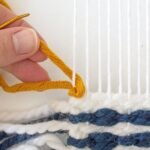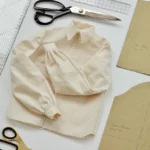Oriental rugs, with their intricate designs and rich colors, have a long history that reflects the artistry and craftsmanship of various cultures. From ancient Persia to modern-day weavers, these rugs represent a blend of history, tradition, and skill. Here’s an exploration of their rich heritage and the craftsmanship behind these timeless pieces.

A Brief History of Oriental Rugs
Origins:
- Early Beginnings: The art of rug weaving began in ancient Persia (modern-day Iran), around 2500-500 BC. The oldest known rug, the Pazyryk Rug, was discovered in a Scythian tomb in Siberia and dates back to the 5th century BC.
- Cultural Influence: Oriental rugs were initially created for practical purposes, such as insulation and seating. Over time, they evolved into decorative art pieces, influenced by various cultures including Persian, Turkish, Indian, and Chinese.
Historical Significance:
- Silk Road: The Silk Road played a crucial role in the spread of Oriental rugs. Traders and travelers carried these beautiful textiles from the East to Europe, expanding their influence and popularity.
- Royal Patronage: Many Oriental rugs were commissioned by royalty and nobility, leading to highly intricate and luxurious designs. These rugs were often used to showcase wealth and status.
Craftsmanship of Oriental Rugs
Materials Used:
- Wool: The most common material, known for its durability and softness. Wool rugs are often used in high-traffic areas.
- Silk: Highly prized for its sheen and luxurious feel. Silk rugs are more delicate and are typically used in less-traveled areas or as wall hangings.
- Cotton: Used for the foundation of rugs or as a less expensive alternative to wool and silk.
Weaving Techniques:
- Knotted Pile: The most traditional technique, involving tying knots around the warp threads to create a pile. This method allows for intricate patterns and designs.
- Flatweave: Includes techniques such as kilim and soumak, where the rug is woven without knots. Flatweaves are typically lighter and more reversible.
- Hooked Rugs: Created by pulling yarn through a backing material using a hook. This technique allows for a different texture and pattern.
Design and Patterns:
- Geometric Patterns: Common in Persian and Turkish rugs, these patterns often feature intricate motifs and borders.
- Floral Designs: Frequently found in Persian rugs, these designs include elaborate flower and leaf patterns.
- Symbolic Motifs: Many Oriental rugs include symbols and motifs that hold cultural or religious significance. For example, the Tree of Life or various animal motifs.
Regional Variations in Oriental Rugs
Persian Rugs:
- Characteristics: Known for their elaborate patterns, rich colors, and high-quality craftsmanship. Persian rugs often feature intricate medallions and floral designs.
- Famous Types: Includes Tabriz, Kashan, Isfahan, and Nain rugs, each with unique characteristics and regional influences.
Turkish Rugs:
- Characteristics: Often characterized by their geometric patterns and vibrant colors. Turkish rugs, such as those from the Anatolian region, can feature bold, symmetrical designs.
- Famous Types: Includes Oushak and Hereke rugs, renowned for their high-quality materials and craftsmanship.
Indian Rugs:
- Characteristics: Influenced by Persian designs but often feature more varied colors and patterns. Indian rugs are known for their intricate details and craftsmanship.
- Famous Types: Includes Agra and Jaipur rugs, which often incorporate a mix of traditional and contemporary designs.
Chinese Rugs:
- Characteristics: Known for their distinctive motifs and use of vibrant colors. Chinese rugs often feature symbolic elements and serene, natural themes.
- Famous Types: Includes Peking and Ningxia rugs, which are renowned for their craftsmanship and aesthetic appeal.
Caring for Oriental Rugs
Regular Maintenance:
- Vacuuming: Regular vacuuming helps remove dust and dirt. Use a vacuum with a beater bar or adjust the height setting to avoid damaging the pile.
- Spot Cleaning: Address spills immediately with a clean, damp cloth. Avoid harsh chemicals that can damage the fibers or colors.
Professional Cleaning:
- Deep Cleaning: Periodic professional cleaning is recommended to preserve the rug’s quality and appearance. Professionals can handle deep cleaning and repairs that are beyond DIY methods.
Storage:
- Proper Storage: Store rugs in a cool, dry place. Avoid direct sunlight and ensure they are rolled rather than folded to prevent creases and damage.
Conclusion
Oriental rugs are not just decorative items; they are a testament to the rich history and meticulous craftsmanship of their creators. Understanding their origins, techniques, and care can enhance your appreciation of these beautiful textiles. Whether you own a family heirloom or are considering a new addition to your home, the beauty and artistry of Oriental rugs continue to captivate and inspire.











